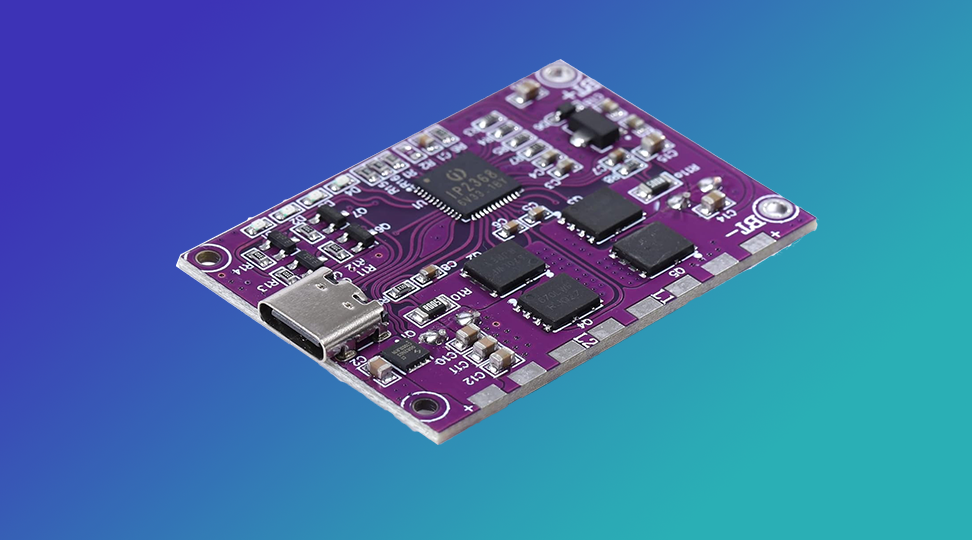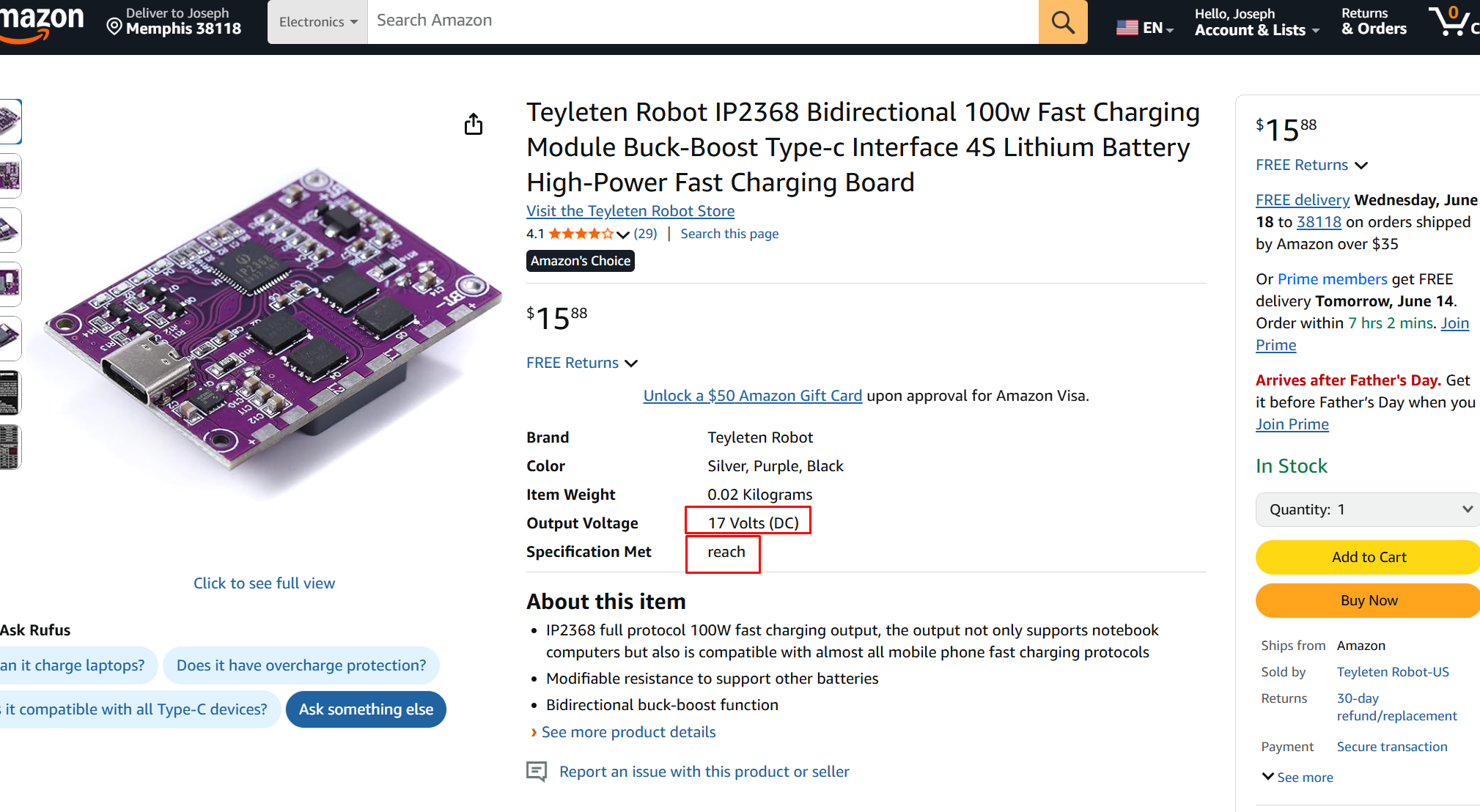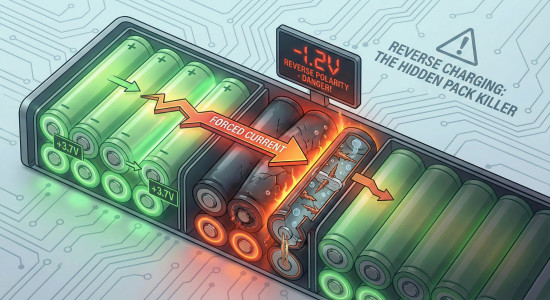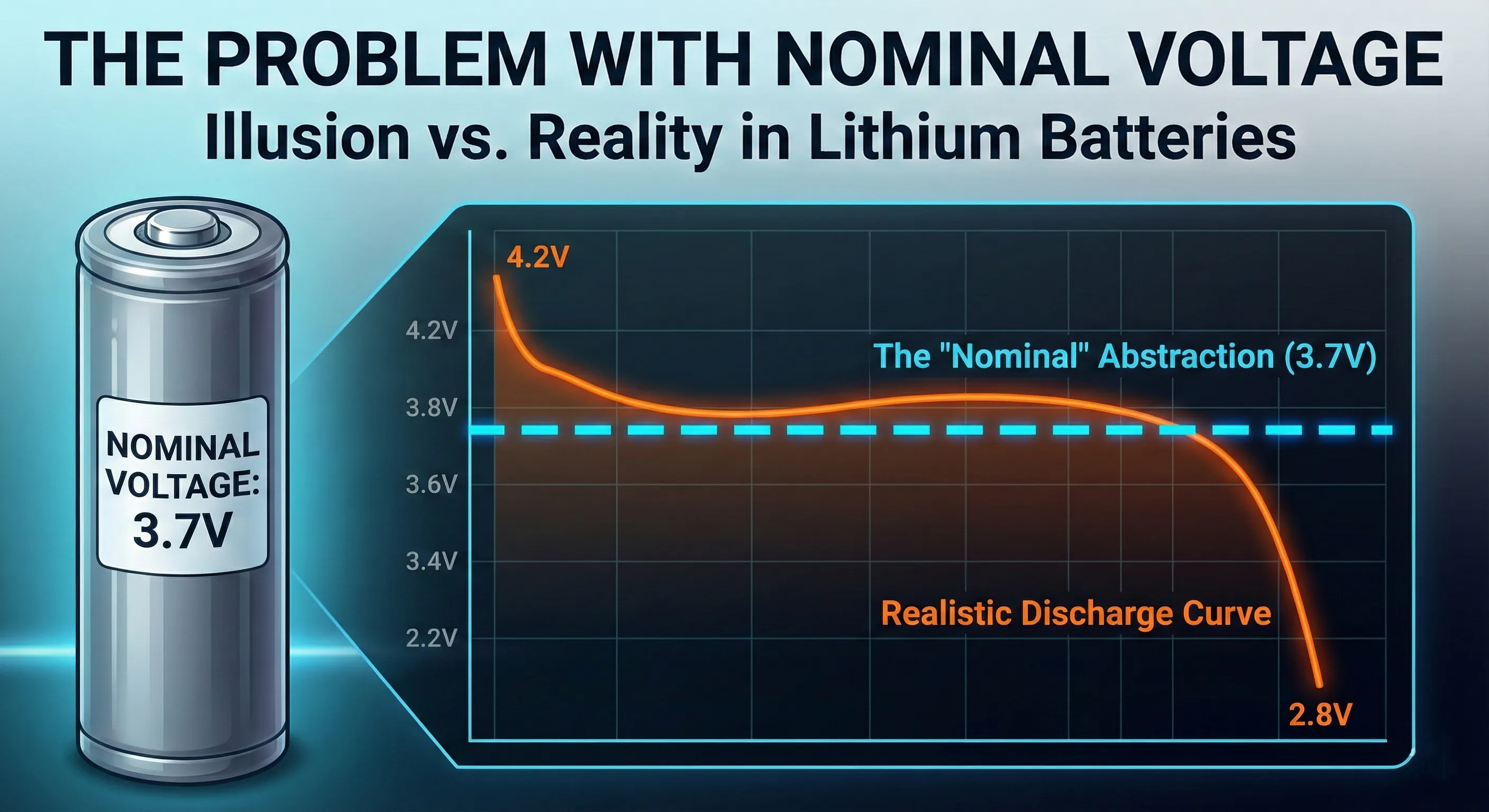
The Best USB PD Module
Table of Contents
USB PD a.k.a USB Power Delivery is extremely versatile. It's used to charge phones, run laptops, power soldering irons, turn motors, and spin fans. Because of this level of flexibility, there's not one single 'best' USB PD module that covers every application perfectly. Instead, we can break choices down into three main categories:
- Best Bang for the Buck (Cheap/Small Module)
- Best Low Power Battery Bank Module
- Best High Power Battery Bank Module
This way, we can cover all the bases so you can find the best USB PD module for your specific application.
Best Bang for the Buck: Tiny USB PD Module
Module Overview
These compact boards are barely wider or longer than a USB A port, yet they support almost the entire USB PD specification: 5 V, 9 V, 12 V, and 20 V at up to 3 A each. They also support PPS (Programmable Power Supply), though few devices currently use this feature. Efficiency ranges from 92 % to 97 %, and the module handles USB PD negotiation on both the input and output sides.
Voltage Input and Output
The module accepts a DC input up to 35 V. Your maximum selectable output voltage depends on the input:
- 12V in → outputs 5V or 9V
- 21V in → outputs 5V, 9V, 12V, and 20V
- 8.4V in → outputs only 5V
- 16.8V in → outputs 5V, 9V, and 12V
- 18.1V in → outputs 5V, 9V, and 12V
In general, you must supply slightly more voltage than the highest output you need. If you use this module to drive a USB PD trigger board, it handles all voltage selection automatically.
Performance and Protection
- Power: Capable of 65 W output (3 A × 20 V), though it runs hot at maximum load. Consider a small heatsink or fan for continuous high-current use.
- Safety: Built-in over-temperature, over-current, and short-circuit protection. However, it lacks reverse-polarity detection—connecting input backward will damage the module.
- Quiescent Current: ~3 mA when idle.
- Output Ripple: ~200 mV, which is acceptable for devices with internal regulators (e.g., battery chargers). For sensitive lab experiments, extra filtering may be needed.
Mechanical Integration
You can solder a male XT60 connector directly to the board—no wires required—for a compact, low-current connection (few amps). Wrap with 2:1 or 3:1 heat shrink for a neat finish.

While some listings claim a 30 V input limit, the module uses 35 V-rated capacitors. In practice, inputs of 32–33 V pose no issues, though we typically operate them between 24 V and 29 V for reliability. It's literally insane that you can get 5 of these modules for 11 dollars on Amazon. Honestly, out of all 4 modules that we are going to cover in the article, this is my favorite one. Its definitely the one that I use the most.
Best USB PD Battery Bank Module (Low Power)
This IP5328P board is, hands down, the best low power battery bank module you can get. It supports 18 W fast charging and has 3 ports, one of which is a bidirectional C port that can be used to either power a USB C device or charge the battery bank itself.
Mechanical Design & Form Factor

It’s the perfect width for an 18650 battery bank with no overhang and sits nicely centered on a 21700-based frame with minimal “bezel.” That makes it easy to fit this thing into compact designs without adding unnecessary bulk to the battery pack.
Input Voltage & Boost Conversion
The best part about this USB PD module is its staggeringly low input voltage requirement. This thing can take a 3 V to 4.2 V input and step it up to either 5 V, 9 V, or 12 V, depending on what the device you plug into it needs.
Output Current Specifications
- 5 V output: up to 3.1 A
- 7 V output: up to 2.4 A
- 9 V output: up to 2.0 A
- 12 V output: up to 1.5 A
Safety & Thermal Management
The controller on the board supports over-current, short-circuit, over-voltage, and over-temperature protection. In fact, it actively scales back its boost-stage current as its internal temperature rises, ensuring the die never exceeds its specified thermal limits.
Thermal Behavior & Operational Notes
This is both a good thing and a bad thing. It means that it won’t ever burn up, but it also means that if you run this thing at peak output for extended periods of time, the output voltage could lower to the next lowest level to keep the heat down. Most of the time, you won’t even notice this, but if you are using a USB PD trigger to get a 12 V output out of this board and use that to power a 15 W or more load, after some time it will drop to 9 V unless you supply some cooling.
But to be totally honest, that’s not even worth mentioning. Under normal operation, you won’t have the slightest bit of trouble out of this board. It’s only if you are using external equipment (a USB PD trigger) to squeeze the absolute maximum power out of this board that you’ll see any kind of problem— and even in that case, it scales down accordingly. This fantastic USB PD Battery Bank Module can be purchased on Amazon for the amazingly low price of $13 for two.
Best USB PD Battery Bank Module (High Power)
This high‑power USB Power Delivery (USB‑PD) battery‑bank board uses the IP2368 chipset and delivers up to 100 W of fast charging in both directions. Unlike 1 S‑only modules, it can work with 2 S, 3 S, 4 S, 5 S, or 6 S packs.

2. Default Configuration & BMS
The board leaves the factory set for 4 S operation. Although you will notice several extra connections on the PCB, there is no built‑in BMS — you must add one that matches the cell count. Changing a few resistors lets you switch the board to 2 S, 3 S, 5 S, or 6 S.
3. Bidirectional Boost‑Buck Conversion
The IP2368 is a bidirectional boost‑buck controller:
- Charging: A 5 V USB input is boosted to the correct voltage to charge, for example, a 4 S pack (up to 16.8 V).
- Discharging: The same circuitry bucks or boosts the battery voltage to any supported USB‑PD rail.
Supported USB‑PD Voltages
No matter where the battery sits — around 12 V when low to 16 V when full for a 4 S pack — the board can always output 5 V, 9 V, 12 V, 15 V, or 20 V.
Thermal Performance
A lot of power can flow through this board, and the chips get super‑hot when pushed:
- Discharge: Typical loads (phones, tablets, USB soldering irons) draw 20–60 W intermittently, so temperatures stay modest.
- Charge: Continuous fast charging can drive the ICs to ~85 °C in open air. Adding a heat‑sink is highly recommended.
Configuring the board for 5 S or 6 S reduces current for the same wattage, so it runs cooler. I usually reconfigure these boards for 6 S and pair them with a 6 S BMS. You get the same power with lower current and less heat. These boards are very, very good — despite their excruciatingly hot operation under full load, I have yet to see one fail. But they do run very, VERY hot. Honestly, the best thing to do would be to wire up a tiny 24V to the + on the PCB.
Extra Pads on the PCB
Those extra pads are not for BMS wiring. One pad, marked with a plus sign (+), mirrors whatever USB‑PD mode is active: it shows 5 V until a device negotiates 9 V, 12 V, 15 V, or 20 V, and then the pad follows that voltage. You could attach a small meter here to verify the current PD profile — pretty cool! This thing runs hot, so why not attach a super low power 24V fan to that pin? When operating in 20V mode, it will spin slower than it was rated for, but still fast enough to effectively cool. That will also be true at 15V and 12V. By the time when get to a voltage that the fun will either run very slowly or not at all, we've *also* reached a voltage that simply won't let us output all that much power, rendering the situation unable to get so hot in the first place.
Overall, this is the best high power USB PD battery bank board you can get on Amazon right now.
A Note About The Listings
As you can see below, there are a lot of errors in these Amazon listings. Its a pretty common problem and is a combination of lack of technical expertise on the part of the listers and poorly translated Chinese.

So, if you aren't familiar with USB PD, it can be really confusing, and you may end up buying something that cannot at all do what you need it do to do.
So, What's The Best USB PD Module?
If you need an ultra-compact, cost-effective USB-PD module for up to 65 W output with full PD negotiation and PPS support, the tiny 65W PD module is hard to beat; It can run on just about any low voltage battery, but it can't charge the battery that its running on. For that, you would need a USB Power Bank PD module. For low-power applications, the IP5328P module offers 18 W bidirectional charging and robust protection in a perfect form factor; and for high-power (up to 100 W both ways) multi-cell packs (2 S–6 S), the IP2368-based board provides seamless boost-buck operation across all standard PD voltages.
We hope this articled helped you learn everything you wanted to know about USB PD Modules. Thanks for reading!


